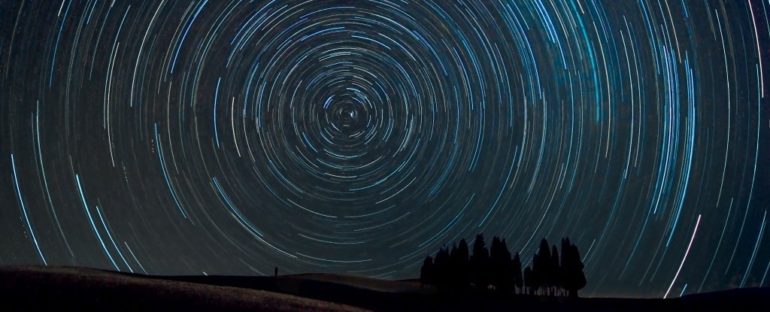A dying massive star is not a peaceful event. It blasts off its outer material in a colossal explosion, irradiating space with high-energy gamma radiation for several years. Empty space isn’t the only thing exposed to this radiation, however. New research suggests that Earth’s ancient trees may contain evidence of these celestial explosions.
“These are extreme events, and their potential effects seem to match tree ring records,” explained geoscientist Robert Brakenridge of the University of Colorado Boulder.
Interestingly, it’s quite hard to tell how often stars in the Milky Way explode. Several different techniques have suggested that there should be one to three local supernovae per century, but the most recent Milky Way supernova observation on record was more than 400 years ago.
There’s evidence to suggest that supernovae can pass us by, such as the remnant of a star thought to have exploded around 120 years ago. So it’s likely our human records are incomplete, even though we would expect to be able to see supernova events quite clearly, if not with our eyes, then with telescopes, as the brightness peaks and fades over time.
Maybe we needed to look a bit closer to home to ‘see’ these supernovae.
Brakenridge and his team found what could be the fingerprints of ancient nearby supernovae in tree rings dating back to 40,000 years ago. And in the last 15,000 years, their results indicate, there could have been four supernovae close enough to Earth to leave their signature in the trees.
The clue lies in the abundances of a radioactive isotope of carbon called carbon-14, or radiocarbon. Radiocarbon only occurs on Earth in trace amounts compared to the other naturally occurring carbon isotopes.
It’s formed in the upper atmosphere under the bombardment of cosmic rays from space. When cosmic rays enter the atmosphere, they interact with the local nitrogen atoms to trigger a nuclear reaction that produces radiocarbon. Since cosmic rays are constantly streaming through space, Earth receives a more or less steady supply of radiocarbon.
Some of this can be found, naturally, in tree rings. And every now and again, a large radiocarbon spike turns up in tree rings, fading over several years. Since a rather significant known source of cosmic rays is solar activity, these spikes are usually interpreted as evidence of solar flares and storms.
But Brakenridge and his team think there’s another explanation.
“There are really only two possibilities: A solar flare or a supernova,” he said. “I think the supernova hypothesis has been dismissed too quickly.”
To test the validity of the supernova hypothesis, he and his team hit the records. First, they made a list of known supernovae over the last 40,000 years, traceable through the nebula supernova remnants they leave behind. Then, they compared this list to the record of radiocarbon spikes in tree rings from the same period.
Interestingly, they found that the eight closest supernovae to Earth all seem to correspond with a radiocarbon spike. And four, in particular, stood out.
The Vela supernova, which exploded around 12,300 years ago at a distance of 800 light-years from Earth, corresponded with a 3 percent rise in radiocarbon. The G114.3+00.3 supernova, which exploded around 7,700 years ago at a distance of around 2,300 light-years, corresponded with a 2 percent rise.
Vela Jr., the timing of which is difficult to gauge, could have occurred 2,800 years ago, corresponding to a 1.4 percent radiocarbon spike. And finally, HB9, which exploded 5,400 years ago at a distance of 1,000 to 4,000 light-years, corresponds with a 0.9 percent radiocarbon spike.
As far as evidence goes, this is far from conclusive at this stage. Given the difficulty dating, for example, the Vela Jr. supernova, it cannot be stated with certainty that the radiocarbon spike absolutely corresponds with the explosion.
But the findings do suggest that the hypothesis absolutely warrants further investigation.
“What keeps me going,” Brakenridge said, “is when I look at the terrestrial record and I say, ‘My God, the predicted and modelled effects do appear to be there’.”
And, if it holds up, tree rings could be an excellent tool for studying the explosion history of our galaxy. They could help finally pin down those ancient supernovae that have proven slippery. And, in turn, that could help us put together a census of nearby supernovae that sheds light on how often Milky Way stars go kaboom.
The research has been published in the International Journal of Astrobiology.



